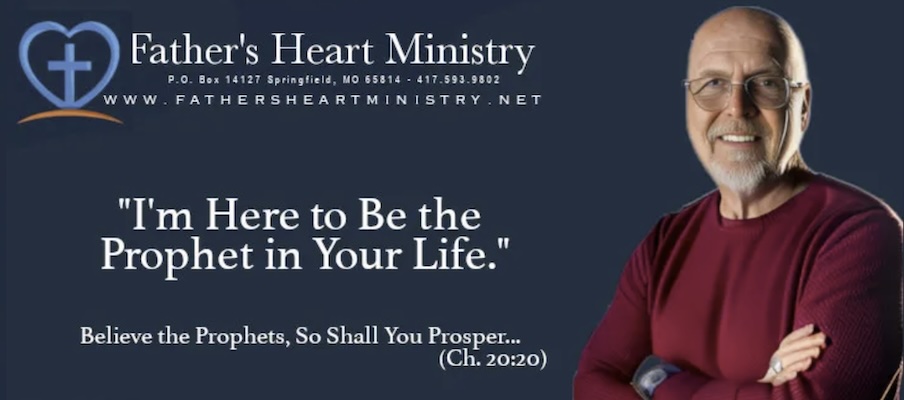Chapter One
Twentieth-century Christianity is as far removed from its first-century counterpart as Herodian Judaism in Jesus’ day was from the Temple of Solomon. The Jewish religious system prevalent in Jesus’ time strayed from the pure, vital worship of Jehovah, denigrating into a corrupt, politicized monstrosity. This system flourished under Herod, the Pharisees, and Sadducees, yet every advance brought it further from the purpose of God. These leaders were so far removed from God that they crucified his Son to preserve the religious status quo. Christianity today is possessed of a life and vitality entirely separate from the life of God. It is capable of advancing its’ agenda and fulfilling its goals solely in the context of its vigor as a sociological unit or religious subculture. Its vast organizations, countless programs, myriad activities, and endless pursuits are mostly void of His grace, alien to His influence.
The exposure of immorality and deceit in Christian leadership over the last many years is a much-needed wake-up call to the saints slumbering in the false security of the Clergy laity dichotomy. It is no longer safe to leave the spiritual affairs of your life in the hands of the church, the pastor, or religious groups you are a part of. It is no longer safe to wait for the next revival or move of God. This is the time to optimize to full potential the impact and power available through Jesus Christ who lives personally and in reality, in the heart of everyone who has accepted Him as their personal Savior. It is not enough to be sincere. The Waco cultists under David Koresh were sincere, and the results were deadly.
There is no denying the need for recovering the individual values and godly ideals that give Christianity a character distinctive from other religious systems. The primary value of Biblical Spirituality is not expressed in doctrine, practice, program, or organization. At the core of Biblical Spirituality, you will find rather, the Person of Jesus Christ, as He is personally manifest in the life of the born again believer. Throbbing beyond the tangled morass of programs, preachers, three-piece suits, and denominational power lunches; under the tons of stained glass and glitzy sanctuaries and benign Sunday morning fashion shows throbs the beating heart of God pumping the liquid virtue of the blood of Christ to the surface of every honest person’s conscience. Sincere hearts are crying out for a return to intimacy with Jesus and heartfelt commitment to the Word of God. How is this return to Biblical Spirituality to be affected? The means will be determined by God’s restorative method. In the fall, one man brought condemnation on the whole race. In regeneration, one man provided justification to all who believe. God fixes things the way they get broken. The church emerging from the first century died by degrees. Year after year, subtle shifts in emphasis and changes in practice accumulated, ultimately leading to a crisis situation (usually involving accusation against a sect or would-be reformer). Church councils convened to redress the critical issues to shore up their threatened power base. These repetitive crises and resulting solutions engendered a cumulative drift away from spiritual purity.
A pattern of change developed within Christianity. Small, almost immeasurable shifts away from Biblical Spirituality into a religious value system prioritized to maintain the entrenchment of the prevailing leadership. When the call for change escalated to the point that it could not be ignored, the “powers that be” would re-posture themselves through doctrinal revision, and increasingly lax standards. Thus, the vibrant church of the living God lurched toward the spiritual abyss of medieval times. This downward process continues today, concurrent with God’s program of restoration. Ultimately this will lead to full apostasy of those elements of Christianity that thrive independent of the sustaining grace of God.
Approximately around the time of Martin Luther, God’s restorative efforts emerged visibly in the annals of Church history. At periodic intervals, men of good conscience and spiritual insight successively influenced increasingly noticeable numbers. The resulting crises in the Church would result in the embrace of reform or more frequent, the expulsion of the reformers and the establishment of splinter groups. On an individual basis, the ebb and flow of these conflicts provided the believer cause to reflect on his relationship with God and perceive it as more personal than institutional. In this way, cumulative restoration resulted in a series of restorative events described as revivals. With most revivals in church history since Luther, the defectors from the religious establishment formed into a separate movement. The upward velocity of these split-away groups, however, never reached escape velocity. After a number of years, they would ultimately spiral backward into the gravity well of the prevailing system.
They would continue to operate independently of the original system, but the distinctions would wane, and practical differences between the original group and the reformers ultimately became nominal. The classic example of that is seen in the Ecumenical agenda to bring the Lutheran and Catholic churches into unity. At the heart of this writing is the conviction that there is prophetic hope affirmed in the scriptures that a generation of believers will appropriate complete restoration of Biblical Spirituality and further fulfill the Great Commission in a magnitude that will dwarf even the first-century mission efforts. That vision describes the expression of the Body of Christ prophesied to be in existence just before Christ’s return. There will emerge on the world scene in the final years before the arrival of Christ an expression of the Body of Christ exhibiting a godly character unparalleled in history. They will be highly visible, unorthodox in practice, simple in doctrine, and radical in commitment. At first analysis, the quest for recovery of Biblical Spirituality may seem bleak. Yet the scriptures affirm the expectation of this hope. Even as the ultimate evil expressed through the antichrist will emerge in full manifestation in the end-times, likewise, there will be a full manifestation of the purpose of God in the Body of Christ concurrent with that evil appearance.
Satan is only a counterfeiter. He originates nothing. He only determines what God is doing in the earth and attempts the opposite. To illustrate, it is known by the scriptures that he will attempt to preempt the personal return of Jesus with a personal, individual expression of himself in the person of the Antichrist. The spirit of Antichrist has been in operation since the first century preparing a support system that will provide the religious, economic, and political platform from which the emerging antichrist will attempt to dominate the world. Likewise, the Spirit of Christ has been in operation through His support system (the church) to prepare the hearts of men for salvation and to prepare the world for judgment. The antichrist’ effort is perversely patterned after this activity of the Spirit of God. The antigod system and the church will both reach their zenith just before the Lord’s return. Satan’s strategy for destruction and God’s agenda of restoration will reach their final stages in the same generation. Both will claim the church as their flagship. The Antichrist will present himself not only as the Jewish messiah but also as the ideal evangelical leader to guide Christianity into the “Kingdom Age.” The current Christian religious system is experiencing great polarization. The gulf will continue to widen between those who hold the person of Jesus as the essential foundation of the faith, and those who operate on principles wholly or partially independent of the Spirit of Christ.
On the unstable middle ground, countless thousands will continue to fall away from the church into the chasm of irreligion or be swept into the myriad fissures of false religion and reactionary cults. This sifting and separation will not reach completion until the judgment when Christ separates the sheep from the goats. The segregation that is to be culminated in heaven then has already been initiated on the earth. Jesus spoke of the angels being sent out at the end-time to separate the wheat from the tares. Many men have become impatient with the command to let both “grow until the harvest…” Separatist movements have succeeded in removing themselves from the “apostate mother church”, but not themselves from the apostasy. Sooner or later, every expressed organization of the church has gone the way of all flesh. The description of the people of God and the glorious church of God in the final days before the Parousia cannot but lead to the conclusion that restoration of Biblical Spirituality will emerge.
The falling away prophesied in the Bible is a manifestation of the threshing of the church in preparation and purification. The precious remnant is being extracted from the vile, corrupt system. Born again believers from every quarter of Christendom – Catholics, Protestants, independents, orthodox, etc., from all these ranks those hungering and thirsting for reality in Jesus Christ are coming forth to Him. The “Falling Away” can only be properly understood from a first-century perspective. The twentieth-century Christian might envision boarded-up churches, backslidden leaders, or rampant godlessness worse than it already is. From the early church perspective, however, it is a much more provocative suggestion. Imagine this “falling away” from the vantage point of the pristine condition of first-century Christianity. Viewed down the corridors of history, modern-day Christianity is a sad caricature of the church of Acts by almost every measurement. The description of the fallen church is the description of modern Christianity. Jesus warned one church to “Remember whence thou art fallen.” Compared to the first-century pattern, the twentieth-century church with all its promotion, pomp and influence, falls far short of God’s purpose. Be aware that the pathway of recovery is a personal, not an institutional matter. Jesus never sought to restore the institution of the Jewish religion. He did come, however, to restore His people to God’s purpose. It is each man’s individual response to Jesus that determines his placement among the wheat or the tares, the sheep or the goats. This determination is more than a decision. Decisions for Jesus are made every day that never result in lasting change or even true regeneration. Your decision to ask Jesus into your heart is only a part of the process.
Click to purchase the book, or downloadable pdf, in it’s entirety
Discover more from Fathers Heart Ministry
Subscribe to get the latest posts sent to your email.

